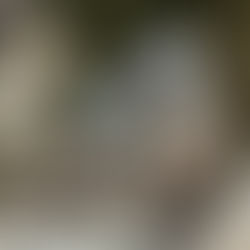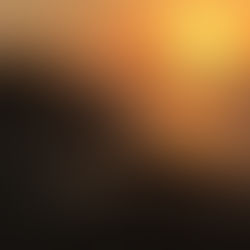Summer holidays
- Leigh McMahon
- Sep 18, 2017
- 5 min read

It’s been a while since I wrote a blog post so apologies for that. For many of you, you will already know that whilst I was in Paraguay doing my internship with Para La Tierra I was offered a job to come back and work as an assistant lab technician/museum curator. This was a huge personal achievement for me, since graduating from my degree 3 years ago it’s been a tough gig getting an employed position in the conservation world. There have been plenty of volunteer roles and I have taken the opportunity to take as many of these as possible but they are not going to pay the bills. So I came home to the UK for a couple of months to sort out my affairs before heading back to Paraguay.
The summer back home was like most summers in the UK mixed bag of weather some festivals, day trips and visiting as many friends as possible. I managed to fit in some of my volunteer work as well with the wildlife trust on water vole surveys and with royal parks doing hedgehog surveys. I also managed to fit in a little holiday to Wales. We stayed around Pembrokeshire and embraced a week of wildlife watching. Skomer offered close up views of the beautiful puffin. Often nicknamed the clown of the ocean I kind of see this they are a little bit cumbersome on the land and waddle about with their brightly striped beaks often with a mouthful of sand eels. Skomer is home to an amazing array of sea birds, it has the largest breeding colony of Atlantic puffins in Southern Britain and half of the worlds population of Manx shearwater nest on Skomer; as well as various other important seabirds including razor bills, guillemots, great cormorants, black-legged kittiwakes, European storm-petrels, common shags, Eurasian oystercatchers and gulls, as well as birds of prey including short-eared owls, common kestrels and peregrine falcons. It is also home to the endemic Skomer vole and the rare chough all this makes it national nature reserve, a Site of Special Scientific Interest and a Special Protection Area. The surrounding sea is a marine reserve as well. The island is also of archaeological importance with evidence that the island has been inhabited up to 5000 years ago. Walking around the island you couldn’t help but see wildlife everywhere from dragonflies, butterflies and beetles up to seals lounging on the rocks and buzzards circling high on the thermals. Care needed to be taken when walking the island; the Manx shearwater and puffins nest in burrows, which unfortunately makes the ground susceptible to burrow collapse if stepped on. We found an open nest on the path that had been protected with a wooden board but this had blown off and as I replaced it I got a cheeky glimpse of a Manx chick. I told a member of staff so the chick could be checked and that the nest was monitored. Littered on the floor was the skulls and wings of the Manx shearwaters that had been predated by gulls coming back to there nest after feeding at see all day, it put into perspective how many birds were nesting on the island.
Now there is a small Corvid that I have been desperately trying to photograph for a while now and although I have seen them several times I have never managed to get a decent photo of one. The chough (chuff) is a medium sized bird with a red bill and legs, the name is derived from the sound that it makes when its calling. Choughs are a social and monogamous birds that over the years, as with much of our wildlife has seen drastic declines in population and even local extinctions due to land management and persecution. A pair of wild birds breed at the lizard in Cornwall 2001 which has helped increase the population on the west coast. It thrives where low intensity livestock farming systems occur close to suitable nesting sites on rock faces, in caves and in old buildings. In Britain and Ireland this combination is only found in the wilder and more remote west coasts and some adjacent inland areas. Visiting Ramsey Island that is managed by the RSPB the chough is doing ok due to appropriate land management. I managed to get pretty close to a family of four sitting on a wall all preening each other and resting and got that all important photo (although it could have been sharper, damn mechanical fault on my lens). The island also has a population of red deer and to see a male strutting his stuff at the top of the highest point was a spectacular view.
From Ramsey we took a speedboat out to Grassholm National Nature Reserve which is the third most important site for gannets in the world, after two sites in Scotland; St Kilda and Bass Rock. It serves as a breeding site for 39,000 pairs of the birds, and supports around 10 percent of the world population. Approaching the island you couldn’t help but notice the hive of activity, the smell and the noise of such a huge population of birds.Everywhere you looked there was something happening, birds dive-bombing into the water by the boat, parents feeding chicks on the cliff edges and pairs displaying courtship dances. There was a group of scientists on the island, I honestly don’t know how they managed to walk without stepping on a bird or two as the whole area seemed to be engulfed with birds. Observing the birds I noted a slightly more sinister and sad side to the story, the island was covered in plastic and fishing netting. Many of the birds were entangled and had netting caught around parts of their body. At the end of the breeding season, wardens do try and release as many of the trapped birds and clean up the netting but many birds succumb to the entanglement. Sailing back to the mainland we were surrounded by a pod of common dolphins bow riding and swimming up to the side of the boat. Unfortunately at this point I had put my camera away as we were getting a bit wet (saturated) from the waves but it was one of those moments that is didn’t really matter too much and was a joy to just watch. We were also fortunate enough to see bottlenose dolphins, porpoise and lots of seal as well.
My time back in the UK was drawing to an end I spent far too much money and should have saved more but C’est la vie as they say, I had a good summer. I had been working as a vet nurse again to earn some money whilst back home. Its nice to keep a hand in it but it reaffirms that I’m still heading down the right path to follow my heart into the conservation world.
I am in Paraguay now after a long journey back via Sao Paolo. Since I left Para La Tierra in April the site has moved to a new property in the city of Pilar to an actual house and not the converted cattle barn that I had fondly warmed to. Work will be carried out across various field sites in Paraguay and in time will allow the organisation to gather much needed information regarding the conservation status of the country. So I will sign off for now and I will send out regular news on what we have been doing. I have also finally finished editing the rest of my photos from South America and my wildlife trip to wales, sorry I got a bit behind with that. I have put them up on the website and on Facebook. As usual I don’t put the same images on both so take a browse on both. I have struggled a bit with my photos due to my lens being broken and not getting the quality of images that I usually strive to get hence why its taken me a while to get them sorted. The lens is all fixed now so fingers crossed I can get many more images of my time in Paraguay.



















